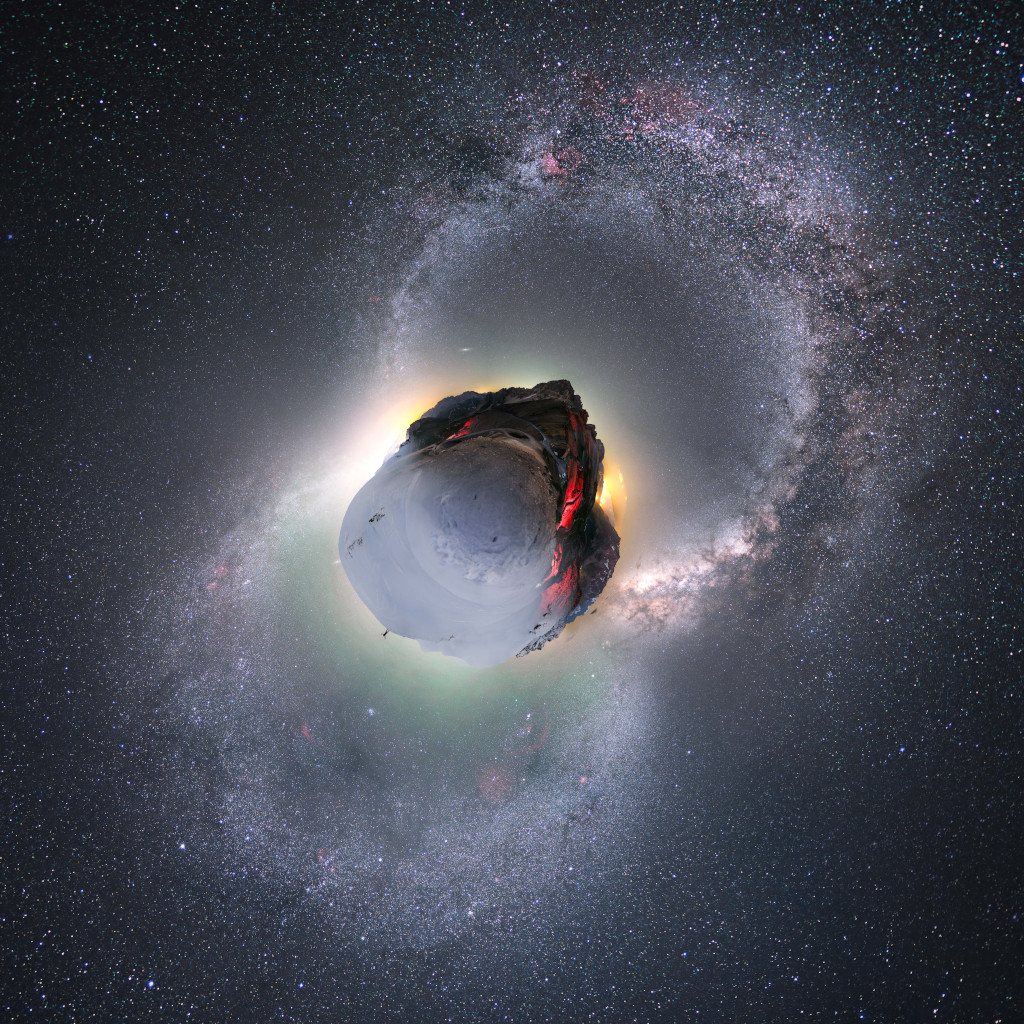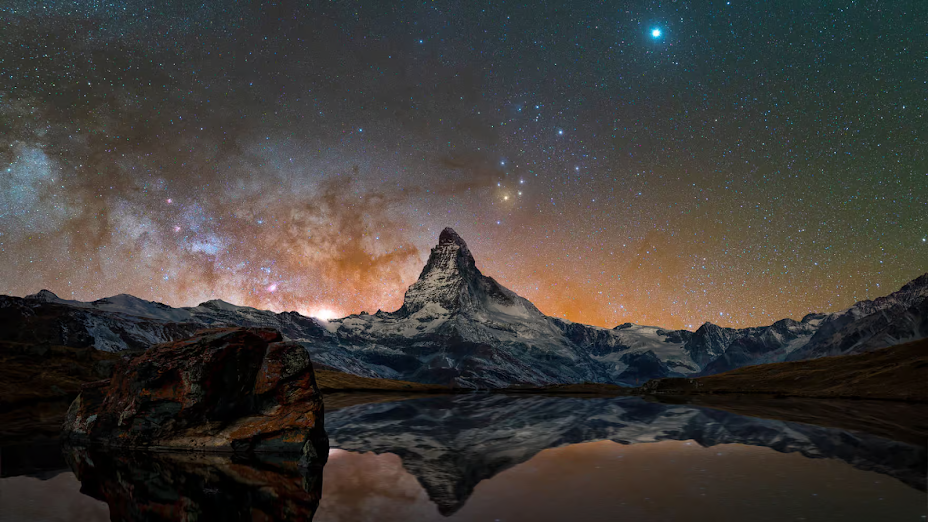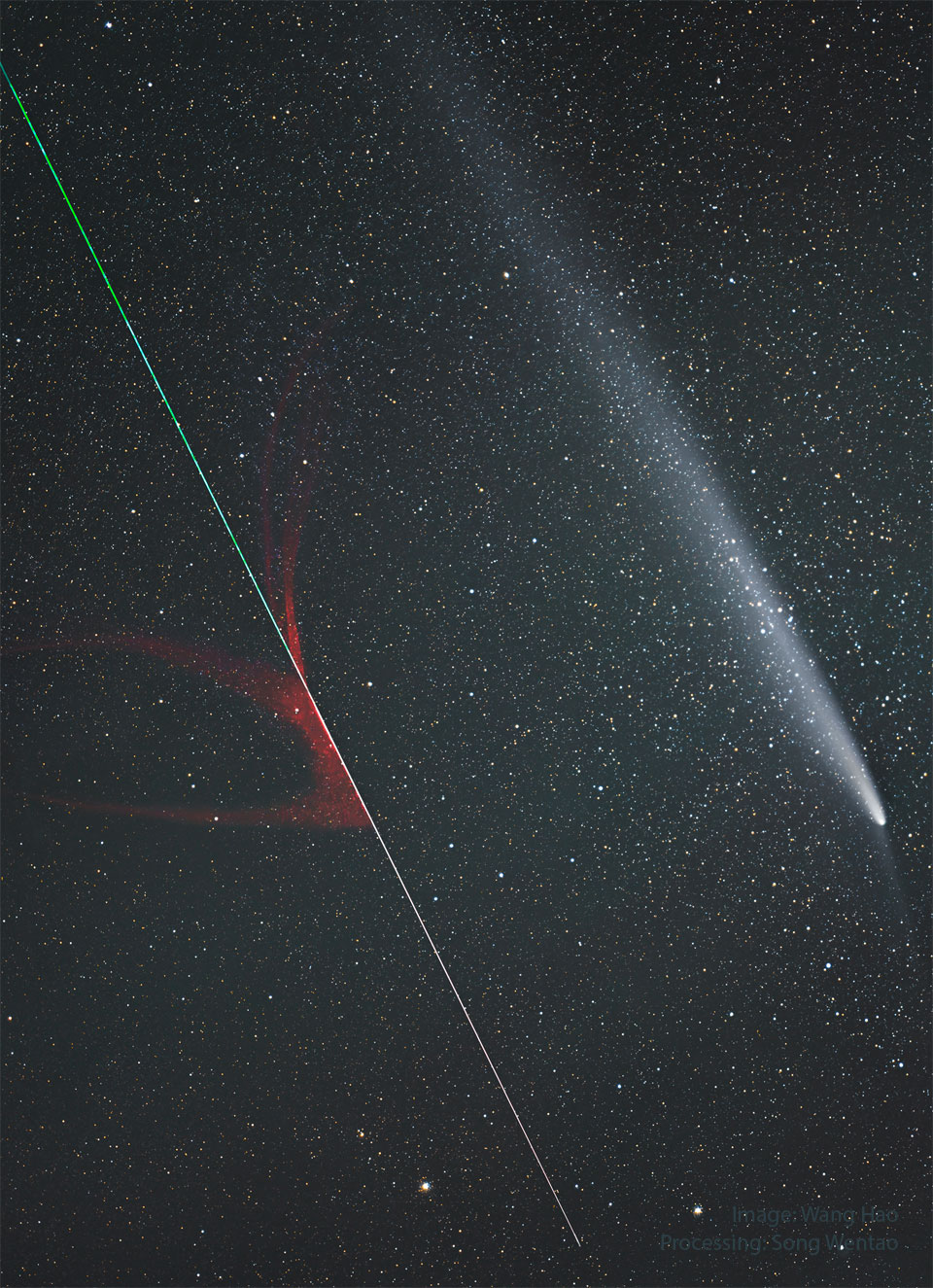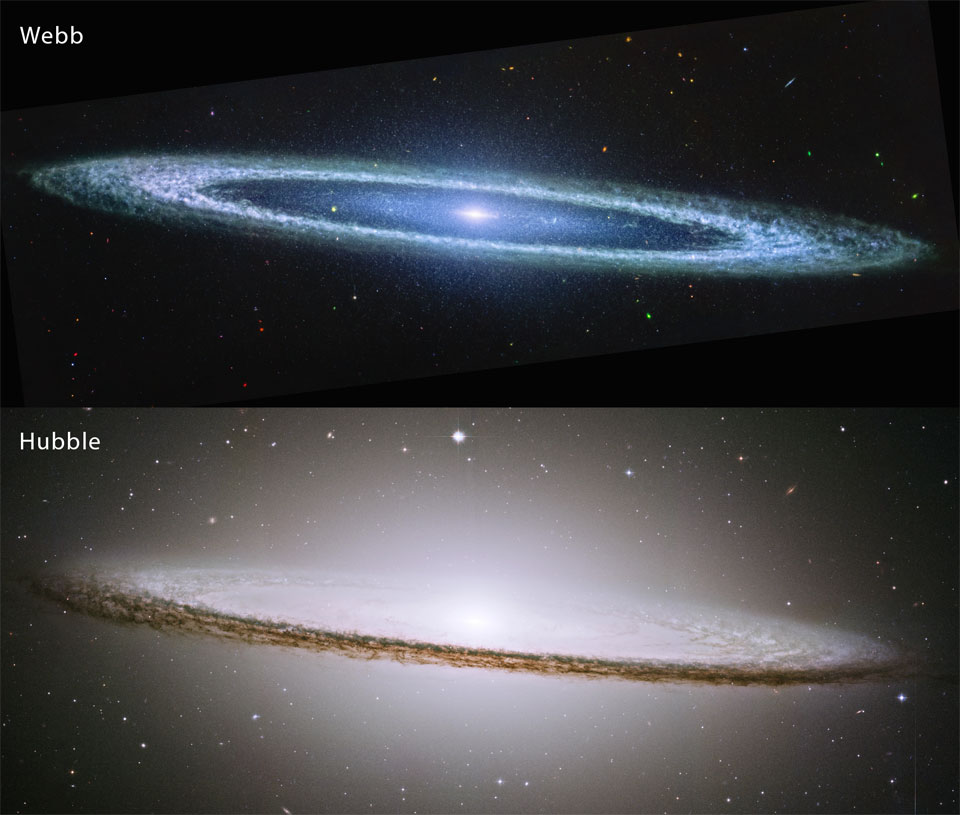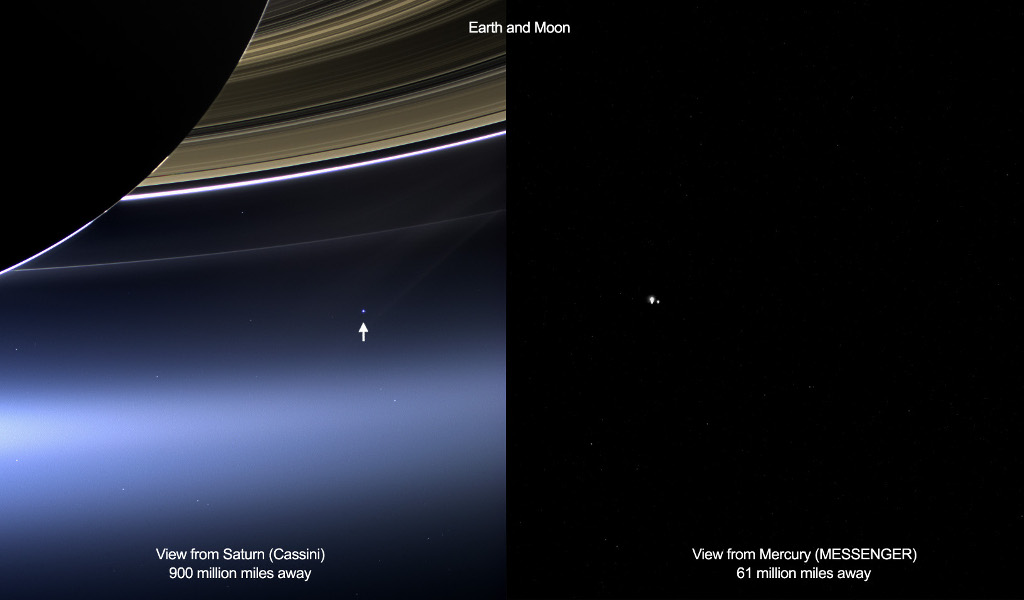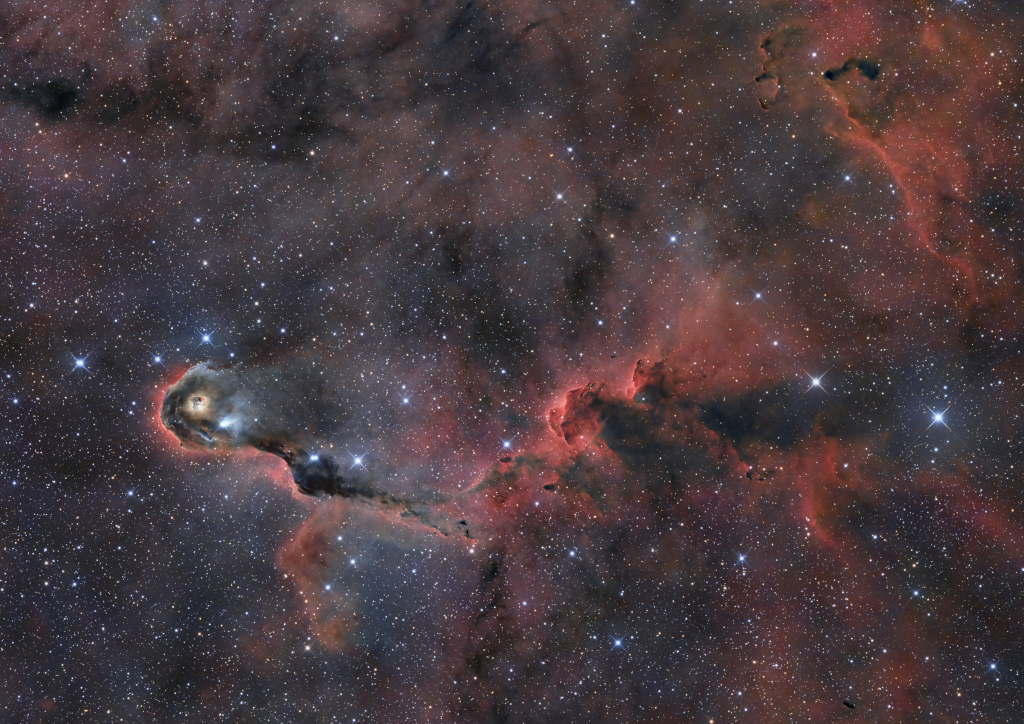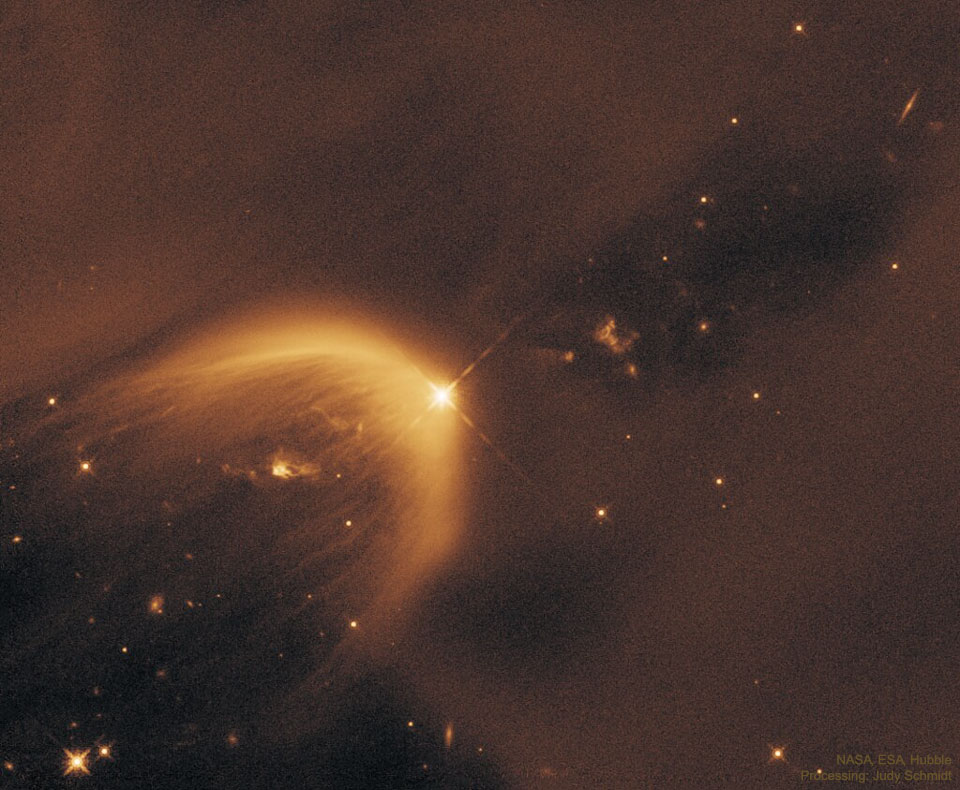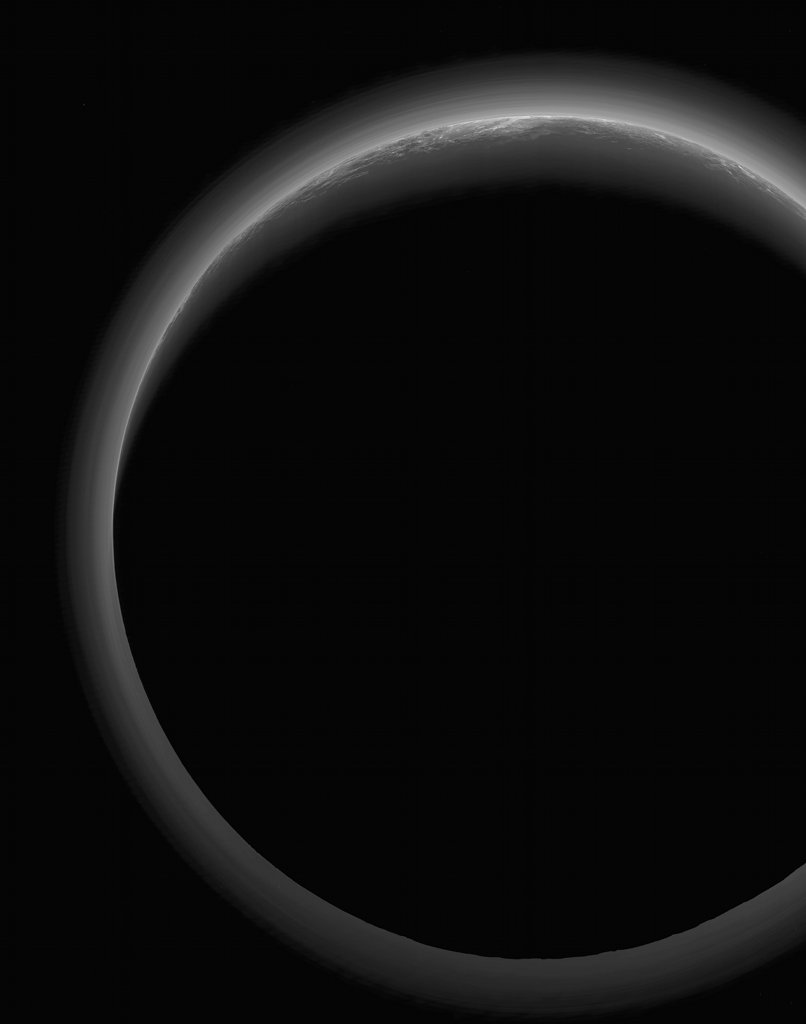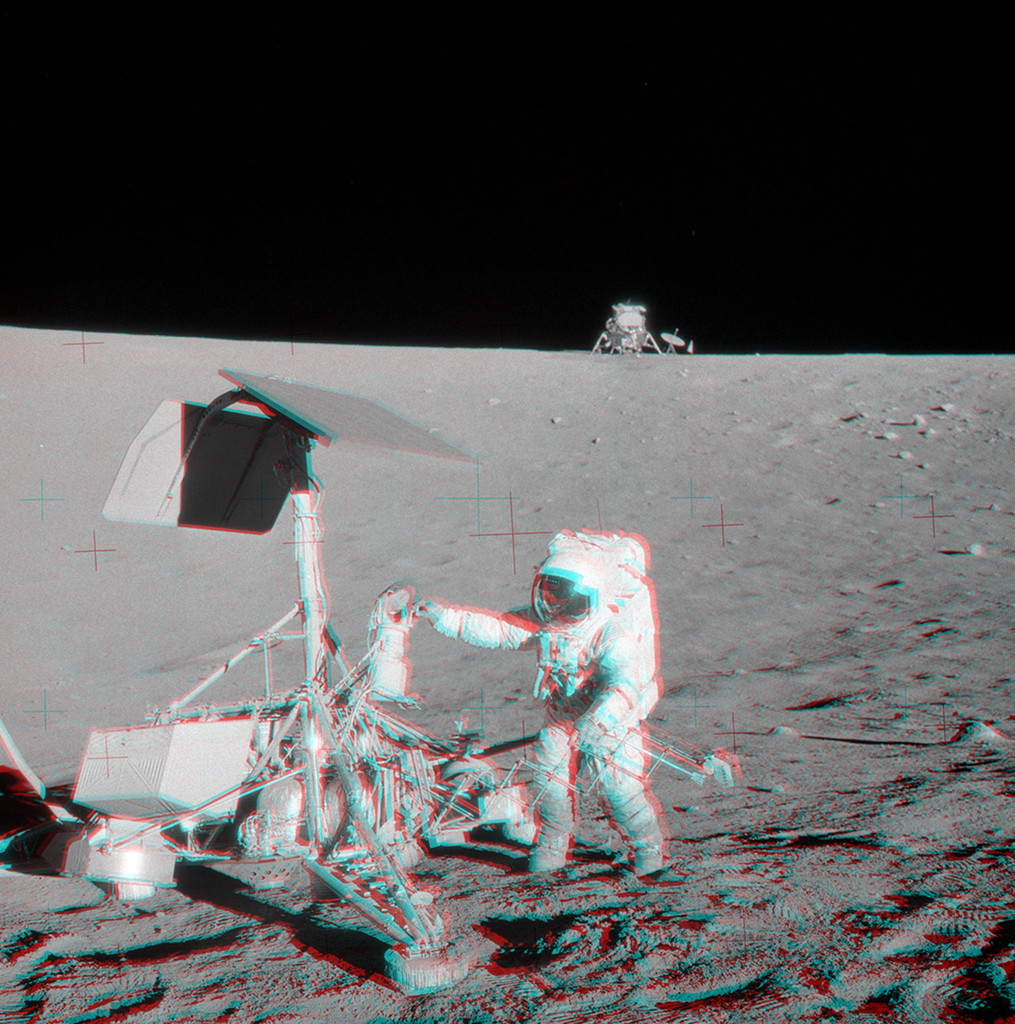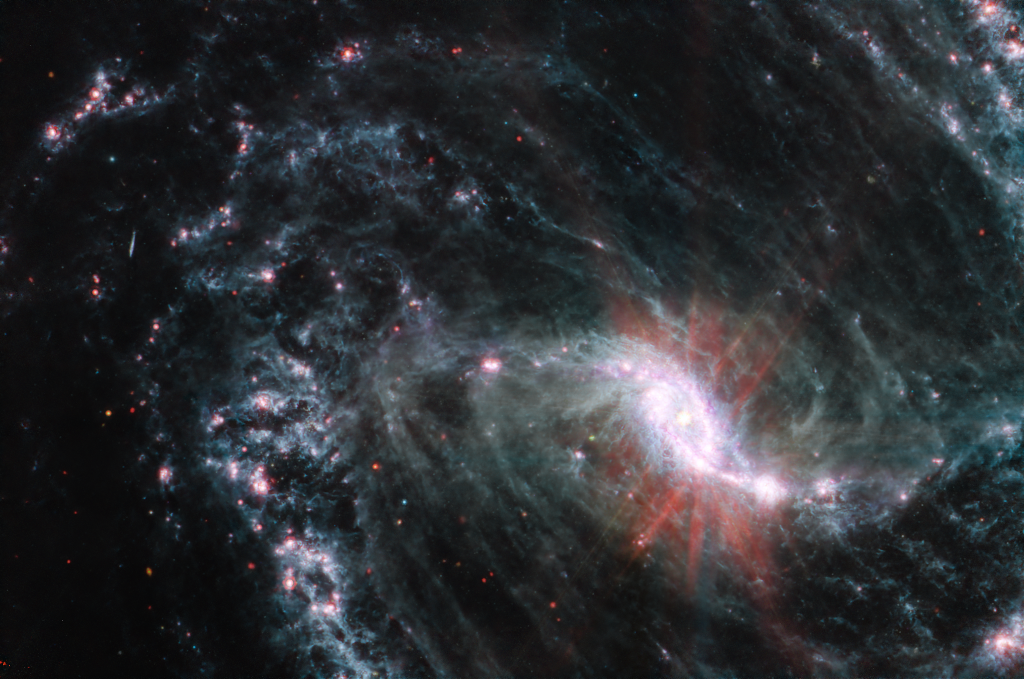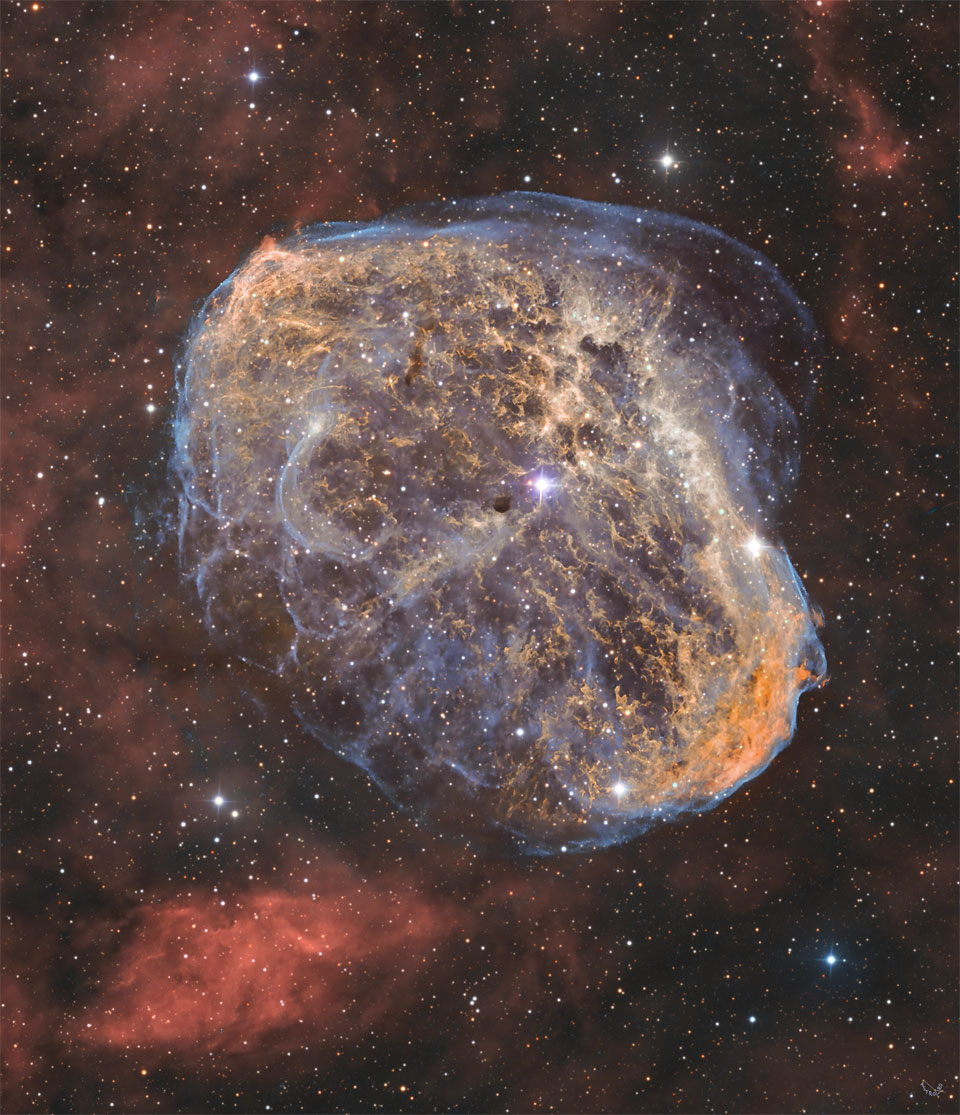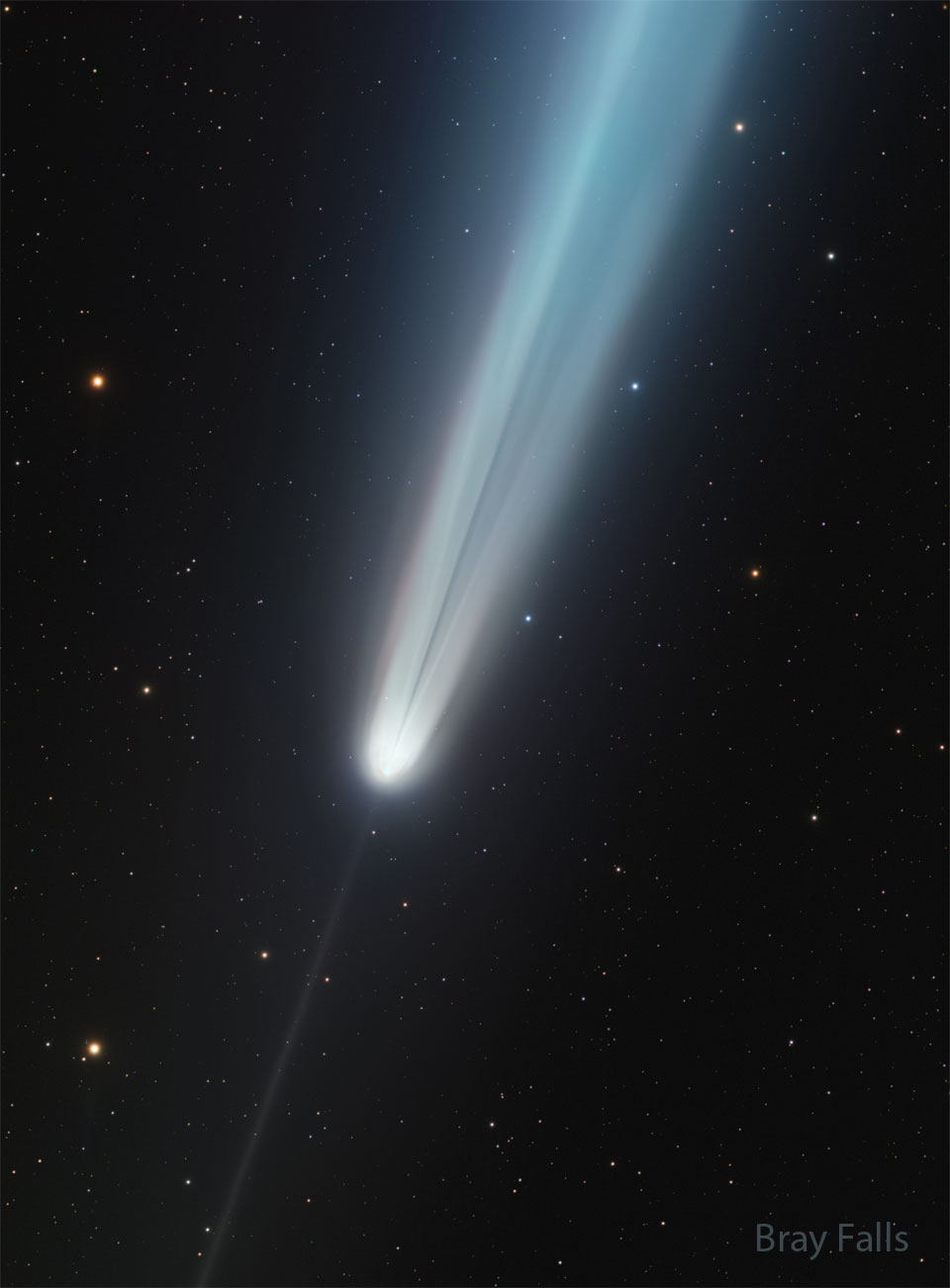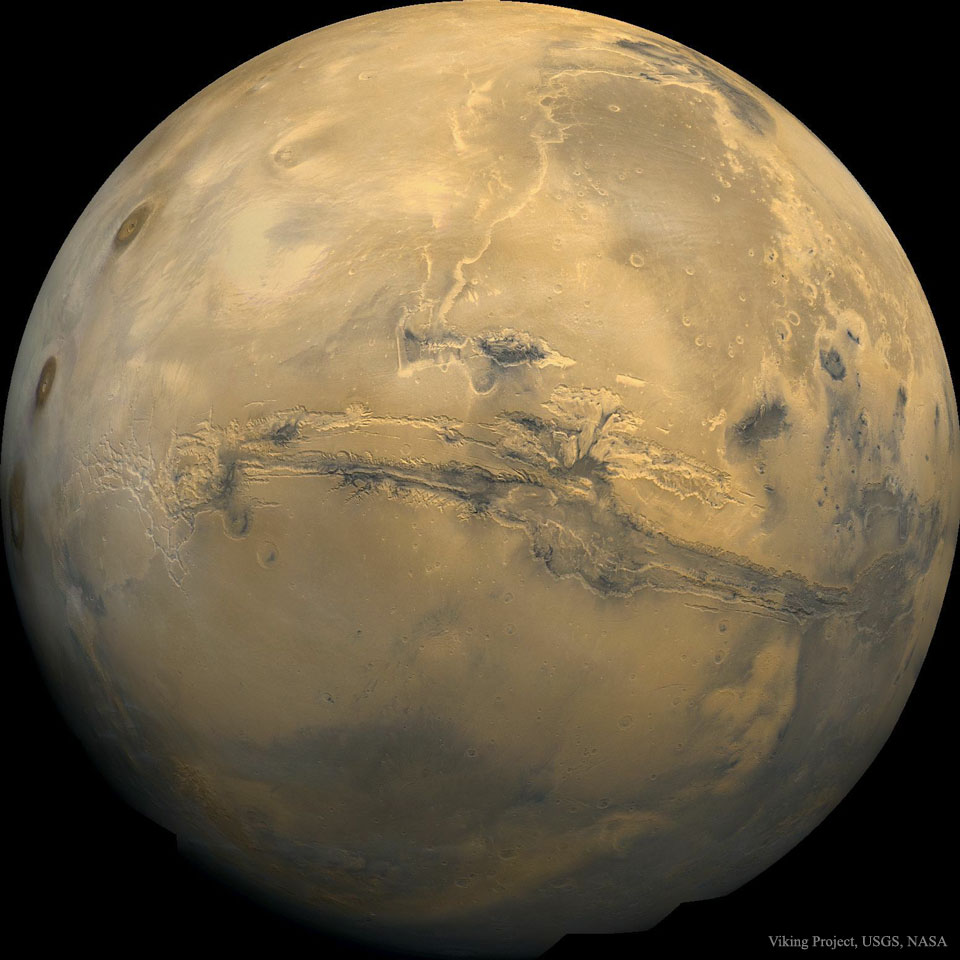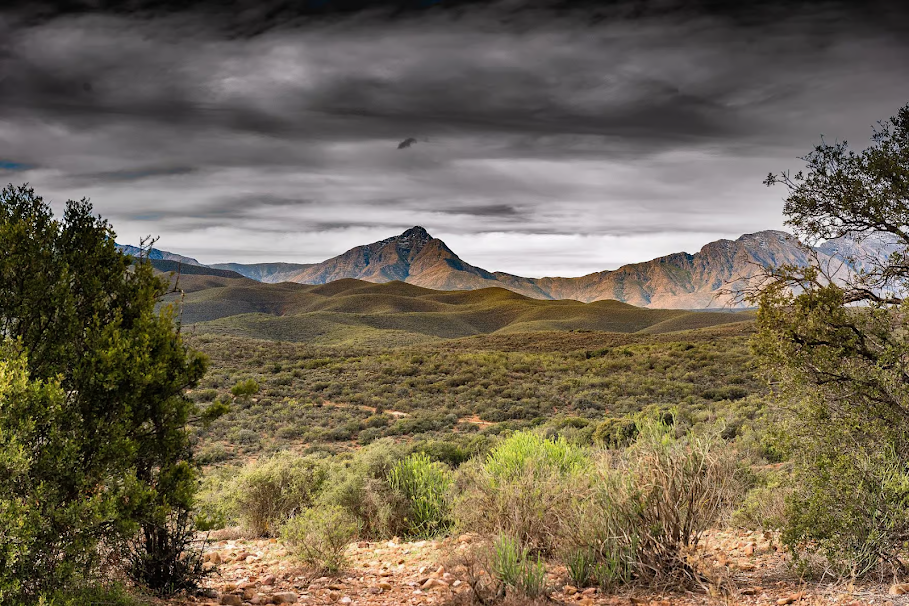Nombre total de pages vues
30/11/2024
ASTRONOMY - Winter and Summer on a Little Planet
2024 November 30
Image Credit & Copyright: Camille Niel
Explanation: Winter and summer appear to come on a single night to this stunning little planet. It's planet Earth of course. The digitally mapped, nadir centered panorama covers 360x180 degrees and is composed of frames recorded during January and July from the Col du Galibier in the French Alps. Stars and nebulae of the northern winter (bottom) and summer Milky Way form the complete arcs traversing the rugged, curved horizon. Cars driving along on the road during a summer night illuminate the 2,642 meter high mountain pass, but snow makes access difficult during winter months except by serious ski touring. Cycling fans will recognize the Col du Galibier as one of the most famous climbs in planet Earth's Tour de France.
29/11/2024
ASTRONOMIE - La Voie Lactée au Cervin - Suisse
ASTRONOMY - Messier 4
2024 November 29
Image Credit & Copyright: Steve Crouch
Explanation: Messier 4 can be found west of bright red-giant star Antares, alpha star of the constellation Scorpius. M4 itself is only just visible from dark sky locations, even though the globular cluster of 100,000 stars or so is a mere 5,500 light-years away. Still, its proximity to prying telescopic eyes makes it a prime target for astronomical explorations. Recent studies have included Hubble observations of M4's pulsating cepheid variable stars, cooling white dwarf stars, and ancient, pulsar orbiting exoplanet PSR B1620-26 b. This sharp image was captured with a small telescope on planet Earth. At M4's estimated distance it spans about 50 light-years across the core of the globular star cluster.
28/11/2024
METEOROLOGIE - Vagues nuageuses en Republique Tchèque
ASTRONOMY - NGC 206 and the Star Clouds of Andromeda
2024 November 28
Image Credit & Copyright: Roberto Marinoni
Explanation: The large stellar association cataloged as NGC 206 is nestled within the dusty arms of the neighboring Andromeda galaxy along with the galaxy's pinkish star-forming regions. Also known as M31, the spiral galaxy is a mere 2.5 million light-years away. NGC 206 is found at the center of this sharp and detailed close-up of the southwestern extent of Andromeda's disk. The bright, blue stars of NGC 206 indicate its youth. In fact, its youngest massive stars are less than 10 million years old. Much larger than the open or galactic clusters of young stars in the disk of our Milky Way galaxy, NGC 206 spans about 4,000 light-years. That's comparable in size to the giant stellar nurseries NGC 604 in nearby spiral M33 and the Tarantula Nebula in the Large Magellanic Cloud.
27/11/2024
METEOROLOGIE - Arcus sur l'île de Pag en Croatie.
ASTRONOMY - The Meteor and the Comet
2024 November 27
Image Credit & Copyright: Wang Hao; Processing: Song Wentao
Explanation: How different are these two streaks? The streak on the upper right is Comet Tsuchinshan-Atlas showing an impressive dust tail. The comet is a large and dirty iceberg that entered the inner Solar System and is shedding gas and dust as it is warmed by the Sun's light. The streak on the lower left is a meteor showing an impressive evaporation trail. The meteor is a small and cold rock that entered the Earth's atmosphere and is shedding gas and dust as it is warmed by molecular collisions. The meteor was likely once part of a comet or asteroid -- perhaps later composing part of its tail. The meteor was gone in a flash and was only caught by coincidence during a series of exposures documenting the comet's long tail. The featured image was captured just over a month ago from Sichuan Province in China.
26/11/2024
METEOROLOGIE - Une tornade monstrueuse
METEOROLOGIE - Arc-en-ciel vaporeux en Antarctique
ASTRONOMY - The Sombrero Galaxy from Webb and Hubble
2024 November 26
Image Credit: NASA, ESA, CSA, STScI, Hubble Heritage Project (STScI, AURA)
Explanation: This floating ring is the size of a galaxy. In fact, it is a galaxy -- or at least part of one: the photogenic Sombrero Galaxy is one of the largest galaxies in the nearby Virgo Cluster of Galaxies. The dark band of dust that obscures the mid-section of the Sombrero Galaxy in visible light (bottom panel) actually glows brightly in infrared light (top panel). The featured image shows the infrared glow in false blue, recorded recently by the space-based James Webb Space Telescope (JWST) and released yesterday, pictured above an archival image taken by NASA's Hubble Space Telescope in visible light. The Sombrero Galaxy, also known as M104, spans about 50,000 light years and lies 28 million light years away. M104 can be seen with a small telescope in the direction of the constellation Virgo.
25/11/2024
METEOROLOGIE - Sant Bartomeu del Grau (Espagne)
ASTRONOMY - The Horsehead Nebula
2024 November 25
Image Credit & Copyright: Alex Lin (Chilescope)
Explanation: One of the most identifiable nebulas in the sky, the Horsehead Nebula in Orion, is part of a large, dark, molecular cloud. Also known as Barnard 33, the unusual shape was first discovered on a photographic plate in the late 1800s. The red glow originates from hydrogen gas predominantly behind the nebula, ionized by the nearby bright star Sigma Orionis. The darkness of the Horsehead is caused mostly by thick dust, although the lower part of the Horsehead's neck casts a shadow to the left. Streams of gas leaving the nebula are funneled by a strong magnetic field. Bright spots in the Horsehead Nebula's base are young stars just in the process of forming. Light takes about 1,500 years to reach us from the Horsehead Nebula. The featured image was taken from the Chilescope Observatory in the mountains of Chile.
24/11/2024
ASTRONOMY - Journey to the Center of the Galaxy
2024 November 24
Video Credit: ESO/MPE/Nick Risinger (skysurvey.org)/VISTA/J. Emerson/Digitized Sky Survey 2
Explanation: What lies at the center of our galaxy? In Jules Verne's science fiction classic, A Journey to the Center of the Earth, Professor Liedenbrock and his fellow explorers encounter many strange and exciting wonders. Astronomers already know of some of the bizarre objects that exist at our Galactic Center, including vast cosmic dust clouds, bright star clusters, swirling rings of gas, and even a supermassive black hole. Much of the Galactic Center is shielded from our view in visible light by the intervening dust and gas, but it can be explored using other forms of electromagnetic radiation. The featured video is actually a digital zoom into the Milky Way's center which starts by utilizing visible light images from the Digitized Sky Survey. As the movie proceeds, the light shown shifts to dust-penetrating infrared and highlights gas clouds that were recently discovered in 2013 to be falling toward the central black hole.
23/11/2024
ASTRONOMY - Interplanetary Earth
2024 November 23
Image Credit: Cassini Imaging Team, SSI, JPL, ESA, NASA & NASA / JHU Applied Physics Lab / Carnegie Inst. Washington
Explanation: In an interplanetary first, on July 19, 2013 Earth was photographed on the same day from two other worlds of the Solar System, innermost planet Mercury and ringed gas giant Saturn. Pictured on the left, Earth is the pale blue dot just below the rings of Saturn, as captured by the robotic Cassini spacecraft then orbiting the outermost gas giant. On that same day people across planet Earth snapped many of their own pictures of Saturn. On the right, the Earth-Moon system is seen against the dark background of space as captured by the sunward MESSENGER spacecraft, then in Mercury orbit. MESSENGER took its image as part of a search for small natural satellites of Mercury, moons that would be expected to be quite dim. In the MESSENGER image, the brighter Earth and Moon are both overexposed and shine brightly with reflected sunlight. Destined not to return to their home world, both Cassini and MESSENGER have since retired from their missions of Solar System exploration.
22/11/2024
METEOROLOGIE - Tempête de sable en Iraq
ASTRONOMY - The Medusa Nebula
2024 November 22
Image Credit & Copyright: Bruno Rota Sargi
Explanation: Braided and serpentine filaments of glowing gas suggest this nebula's popular name, The Medusa Nebula. Also known as Abell 21, this Medusa is an old planetary nebula some 1,500 light-years away in the constellation Gemini. Like its mythological namesake, the nebula is associated with a dramatic transformation. The planetary nebula phase represents a final stage in the evolution of low mass stars like the sun as they transform themselves from red giants to hot white dwarf stars and in the process shrug off their outer layers. Ultraviolet radiation from the hot star powers the nebular glow. The Medusa's transforming star is the faint one near the center of the overall bright crescent shape. In this deep telescopic view, fainter filaments clearly extend below and to the left. The Medusa Nebula is estimated to be over 4 light-years across.
21/11/2024
ASTRONOMY - The Elephant's Trunk in Cepheus
2024 November 21
Image Credit: Image Credit & Copyright: Giorgio Ferrari
Explanation: Like an illustration in a galactic Just So Story, the Elephant's Trunk Nebula winds through the emission region and young star cluster complex IC 1396, in the high and far off constellation of Cepheus. Also known as vdB 142, this cosmic elephant's trunk is over 20 light-years long. The detailed telescopic view features the bright swept-back ridges and pockets of cool interstellar dust and gas that abound in the region. But the dark, tendril-shaped clouds contain the raw material for star formation and hide protostars within. Nearly 3,000 light-years distant, the relatively faint IC 1396 complex covers a large region on the sky, spanning over 5 degrees. This rendition spans a 1 degree wide field of view though, about the angular size of 2 full moons.
20/11/2024
ASTRONOMY - Earthset from Orion
2024 November 20
Image Credit: NASA, Artemis 1
Explanation: Eight billion people are about to disappear in this snapshot from space taken on 2022 November 21. On the sixth day of the Artemis I mission, their home world is setting behind the Moon's bright edge as viewed by an external camera on the outbound Orion spacecraft. Orion was headed for a powered flyby that took it to within 130 kilometers of the lunar surface. Velocity gained in the flyby maneuver was used to reach a distant retrograde orbit around the Moon. That orbit is considered distant because it's another 92,000 kilometers beyond the Moon, and retrograde because the spacecraft orbited in the opposite direction of the Moon's orbit around planet Earth. Orion entered its distant retrograde orbit on November 25. Swinging around the Moon, Orion reached a maximum distance (just over 400,000 kilometers) from Earth on November 28, exceeding a record set by Apollo 13 for most distant spacecraft designed for human space exploration. The Artemis II mission, carrying 4 astronauts around the moon and back again, is scheduled to launch no earlier than September 2025.
19/11/2024
ASTRONOMY - Undulatus Clouds over Las Campanas Observatory
Image Credit & Copyright: Yuri Beletsky (Carnegie Las Campanas Observatory, TWAN); h/t: Alice Allen
Explanation: What's happening with these clouds? While it may seem that these long and thin clouds are pointing toward the top of a hill, and that maybe a world-famous observatory is located there, only part of that is true. In terms of clouds, the formation is a chance superposition of impressively periodic undulating air currents in Earth's lower atmosphere. Undulatus, a type of Asperitas cloud, form at the peaks where the air is cool enough to cause the condensation of opaque water droplets. The wide-angle nature of the panorama creates the illusion that the clouds converge over the hill. In terms of land, there really is a world-famous observatory at the top of that peak: the Carnegie Science's Las Campanas Observatory in the Atacama Desert of Chile. The two telescope domes visible are the 6.5-meter Magellan Telescopes. The featured coincidental vista was a surprise but was captured by the phone of a quick-thinking photographer in late September.
18/11/2024
METEOROLOGIE - La violence d'un orage en Arizona
ASTRONOMY - Stars and Dust in the Pacman Nebula
2024 November 18
Image Credit & Copyright: Malcolm Loro
Explanation: Stars can create huge and intricate dust sculptures from the dense and dark molecular clouds from which they are born. The tools the stars use to carve their detailed works are high energy light and fast stellar winds. The heat they generate evaporates the dark molecular dust as well as causing ambient hydrogen gas to disperse and glow. Pictured here, a new open cluster of stars designated IC 1590 is nearing completion around the intricate interstellar dust structures in the emission nebula NGC 281, dubbed the Pac-man Nebula because of its overall shape. The dust cloud just above center is classified as a Bok Globule as it may gravitationally collapse and form a star -- or stars. The Pacman Nebula lies about 10,000 light years away toward the constellation of Cassiopeia.
17/11/2024
ASTRONOMY - LDN 1471: A Windblown Star Cavity
2024 November 17
Image Credit: Hubble, NASA, ESA; Processing & License: Judy Schmidt
Explanation: What is the cause of this unusual parabolic structure? This illuminated cavity, known as LDN 1471, was created by a newly forming star, seen as the bright source at the peak of the parabola. This protostar is experiencing a stellar outflow which is then interacting with the surrounding material in the Perseus Molecular Cloud, causing it to brighten. We see only one side of the cavity -- the other side is hidden by dark dust. The parabolic shape is caused by the widening of the stellar-wind blown cavity over time. Two additional structures can also be seen either side of the protostar; these are known as Herbig-Haro objects, again caused by the interaction of the outflow with the surrounding material. What causes the striations on the cavity walls, though, remains unknown. The featured image was taken by NASA and ESA’s Hubble Space Telescope after an original detection by the Spitzer Space Telescope.
16/11/2024
ASTRONOMY - Pluto at Night
Image Credit: NASA, Johns Hopkins Univ./APL, Southwest Research Institute
Explanation: The night side of Pluto spans this shadowy scene. In the stunning spacebased perspective the Sun is 4.9 billion kilometers (almost 4.5 light-hours) behind the dim and distant world. It was captured by far flung New Horizons in July of 2015 when the spacecraft was at a range of some 21,000 kilometers from Pluto, about 19 minutes after its closest approach. A denizen of the Kuiper Belt in dramatic silhouette, the image also reveals Pluto's tenuous, surprisingly complex layers of hazy atmosphere. Near the top of the frame the crescent twilight landscape includes southern areas of nitrogen ice plains now formally known as Sputnik Planitia and rugged mountains of water-ice in the Norgay Montes.
15/11/2024
METEOROLOGIE - Ciel de feu à Barcelone
ASTRONOMY - Apollo 12 and Surveyor 3
2024 November 15
Image Credit: NASA, Apollo 12, Alan Bean - Stereo Image Copyright: Kevin Frank
Explanation: Put on your red/blue glasses and gaze across the western Ocean of Storms on the surface of the Moon. The 3D anaglyph features Apollo 12 astronaut Pete Conrad visiting the Surveyor 3 spacecraft in November of 1969. Surveyor 3 had landed at the site on the inside slope of a small crater about 2 1/2 years earlier in April of 1967. Visible on the horizon beyond the far crater wall, Apollo 12's Lunar Module Intrepid touched down less than 200 meters (650 feet) away, easy moonwalking distance from the robotic Surveyor spacecraft. This stereo image was carefully created from two separate pictures (AS12-48-7133, AS12-48-7134) captured on the lunar surface. They depict the scene from only slightly different viewpoints, approximating the separation between human eyes.
14/11/2024
BIOMES - Prairies - savanes - brousses
ASTRONOMY - IC 348 and Barnard 3
2024 November 14
Image Credit & Copyright: Ashraf Abu Sara
Explanation: A great nebulous region near bright star omicron Persei offers this study in cosmic contrasts. Captured in the telescopic frame the colorful complex of dust, gas, and stars spans about 3 degrees on the sky along the edge of the Perseus molecular cloud some 1000 light-years away. Surrounded by a bluish halo of dust reflected starlight, omicron Persei itself is just left of center. Immediately below it lies the intriguing young star cluster IC 348 recently explored by the James Webb Space Telescope. In silhouette against the diffuse reddish glow of hydrogen gas, dark and obscuring interstellar dust cloud Barnard 3 is at upper right. Of course the cosmic dust also tends to hide newly formed stars and young stellar objects or protostars from prying optical telescopes. At the Perseus molecular cloud's estimated distance, this field of view would span about 50 light-years.
13/11/2024
ASTRONOMY - Barred Spiral Galaxy NGC 1365 from Webb
2024 November 13
Image Credit: NASA, ESA, CSA, Janice Lee (NOIRLab) - Processing: Alyssa Pagan (STScI)
Explanation: A mere 56 million light-years distant toward the southern constellation Fornax, NGC 1365 is an enormous barred spiral galaxy about 200,000 light-years in diameter. That's twice the size of our own barred spiral Milky Way. This sharp image from the James Webb Space Telescope's Mid-Infrared Instrument (MIRI) reveals stunning details of this magnificent spiral in infrared light. Webb's field of view stretches about 60,000 light-years across NGC 1365, exploring the galaxy's core and bright newborn star clusters. The intricate network of dusty filaments and bubbles is created by young stars along spiral arms winding from the galaxy's central bar. Astronomers suspect the gravity field of NGC 1365's bar plays a crucial role in the galaxy's evolution, funneling gas and dust into a star-forming maelstrom and ultimately feeding material into the active galaxy's central, supermassive black hole.
12/11/2024
ASTRONOMY - NGC 6888: The Crescent Nebula
2024 November 12
Image Credit & Copyright: Team ARO
Explanation: How was the Crescent Nebula created? Looking like an emerging space cocoon, the Crescent Nebula, visible in the center of the featured image, was created by the brightest star in its center. A leading progenitor hypothesis has the Crescent Nebula beginning to form about 250,000 years ago. At that time, the massive central star had evolved to become a Wolf-Rayet star (WR 136), shedding its outer envelope in a strong stellar wind, ejecting the equivalent of our Sun's mass every 10,000 years. This wind impacted surrounding gas left over from a previous phase, compacting it into a series of complex shells, and lighting it up. The Crescent Nebula, also known as NGC 6888, lies about 4,700 light-years away in the constellation of Cygnus. Star WR 136 will probably undergo a supernova explosion sometime in the next million years.
11/11/2024
ASTRONOMY - The Unusual Tails of Comet Tsuchinshan-Atlas
2024 November 11
Image Credit & Copyright: Bray Falls
Explanation: What created an unusual dark streak in Comet Tsuchinshan-Atlas's tail? Some images of the bright comet during mid-October not only caught its impressively long tail and its thin anti-tail, but a rather unexpected feature: a dark streak in the long tail. The reason for the dark streak is currently unclear and a topic of some debate. Possible reasons include a plume of dark dust, different parts of the bright tail being unusually superposed, and a shadow of a dense part of the coma on smaller dust particles. The streak is visible in the featured image taken on October 14 from Texas, USA. To help future analyses, if you have taken a good image of the comet that clearly shows this dark streak, please send it in to APOD. Comet Tsuchinshan–ATLAS has now faded considerably and is returning to the outer Solar System.
10/11/2024
ASTRONOMY - Valles Marineris: The Grand Canyon of Mars
Image Credit: NASA, USGS, Viking Project
Explanation: The largest canyon in the Solar System cuts a wide swath across the face of Mars. Named Valles Marineris, the grand valley extends over 3,000 kilometers long, spans as much as 600 kilometers across, and delves as much as 8 kilometers deep. By comparison, the Earth's Grand Canyon in Arizona, USA is 800 kilometers long, 30 kilometers across, and 1.8 kilometers deep. The origin of the Valles Marineris remains unknown, although a leading hypothesis holds that it started as a crack billions of years ago as the planet cooled. Several geologic processes have been identified in the canyon. The featured mosaic was created from over 100 images of Mars taken by Viking Orbiters in the 1970s.
09/11/2024
BIOMES - La mangrove
ASTRONOMY - Neptune at Night
2024 November 9
Image Credit & Copyright: Voyager 2, NASA
Explanation: Ice giant Neptune is faint in Earth's night sky. Some 30 times farther from the Sun than our fair planet, telescopes are needed to catch a glimpse of the dim and distant world. This dramatic view of Neptune's night just isn't possible for telescopes in the vicinity of planet Earth though. Peering out from the inner Solar System they can only bring Neptune's day side into view. In fact this night side image with Neptune's slender crescent next to the crescent of its large moon Triton was captured by Voyager 2. Launched from planet Earth in 1977 the Voyager 2 spacecraft made a close fly by of the Solar System's outermost planet in 1989, looking back on Neptune as the robotic spacecraft continued its voyage to interstellar space.
08/11/2024
BIOMES - La toundra sous la menace du réchauffement climatique
ASTRONOMY - Helping Hand in Cassiopeia
2024 November 8
Image Credit & Copyright: Francesco Radici
Explanation: Drifting near the plane of our Milky Way galaxy these dusty molecular clouds seem to extend a helping hand on a cosmic scale. Part of a local complex of star-forming interstellar clouds they include LDN 1358, 1357, and 1355 from American astronomer Beverly Lynds' 1962 Catalog of Dark Nebulae. Presenting a challenging target for astro-imagers, the obscuring dark nebulae are nearly 3,000 light-years away, toward rich starfields in the northern constellation Cassiopeia. At that distance, this deep, telescopic field of view would span about 80 light-years.
07/11/2024
UNE QUESTION (PRE)HISTORIQUE - Alors qui de l'oeuf ou de la poule ?
BIOMES - Les prairies savanes et brousses : des biomes peu gourmands en eau
METEOROLOGIE - En Nouvelle-Zélande un étrange nuage apparaît toujours au même endroit depuis 1896
ASTRONOMIE - La dream team Hubble et James-Webb révèle deux yeux cosmiques injectés de sang qui nous regardent !
ASTRONOMY - Orion and the Ocean of Storms
2025 December 13 Orion and the Ocean of Storms Image Credit: NASA , Artemis 1 Explanation: On December 5, 2022, a camera on board the u...

-
2022 September 26 All the Water on Planet Earth Illustration Credit: Jack Cook, Adam Nieman, Woods Hole Oceanographic Institution ; Data ...
-
2025 May 11 The Surface of Venus from Venera 14 Image Credit: Soviet Planetary Exploration Program , Venera 14 ; Processing & Copyri...
